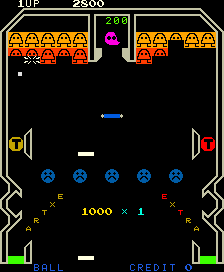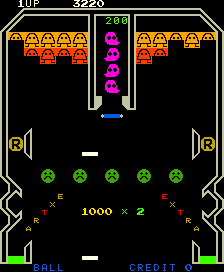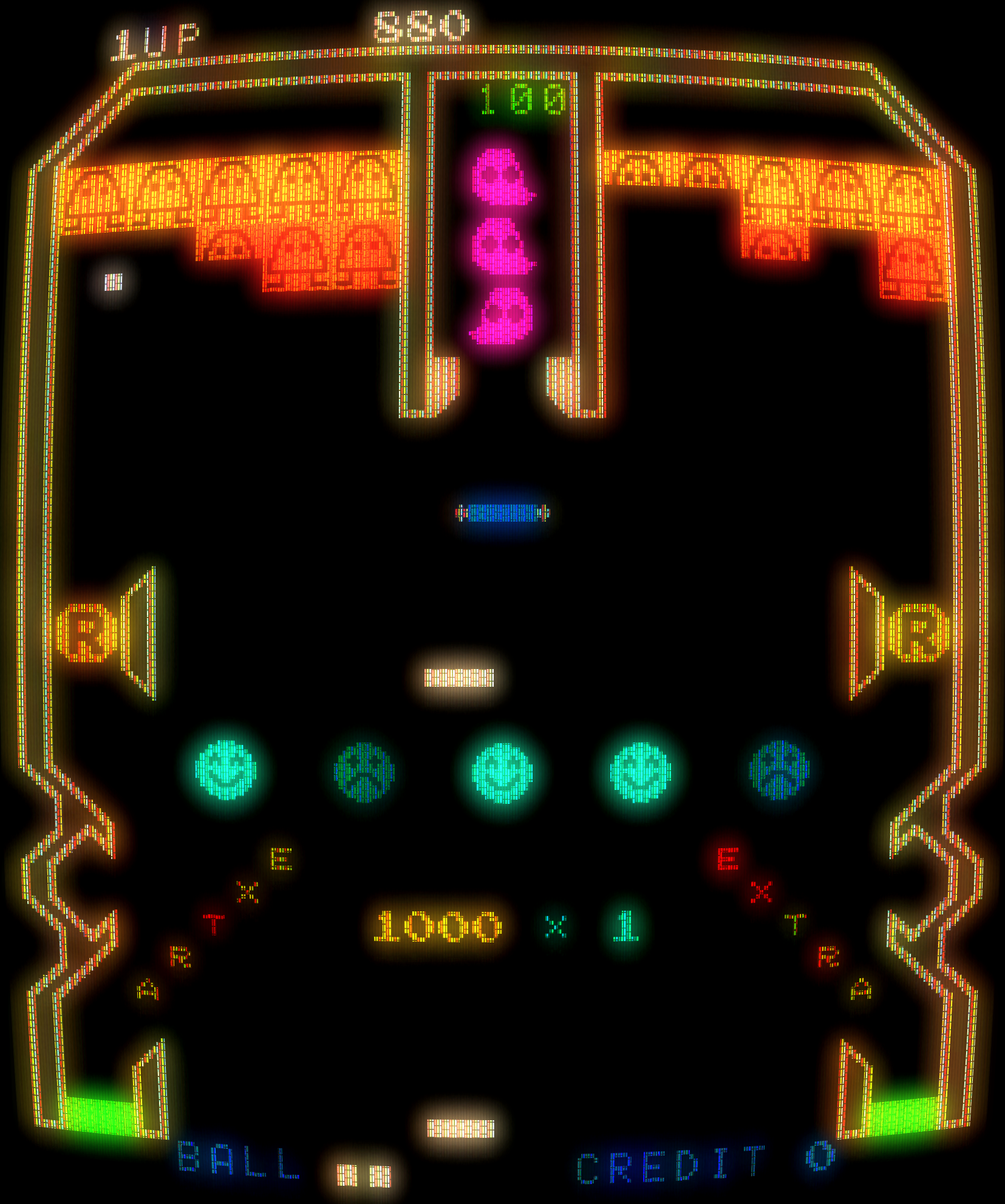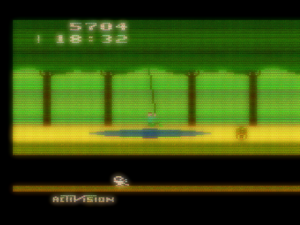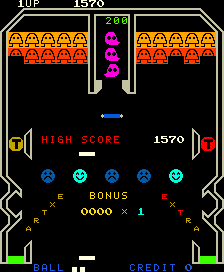
 The Game: You control a pair of paddles at the bottom and center of the screen. Serve a single ball into play, and skillfully deflect it toward rows of brightly colored monsters; tripping all of the “face bumpers” near the center of the screen can yield a big bonus multiplier. If you can drive the ball toward a tunnel structure at the top center of the screen, it’ll do a lot of the work for you, blasting monsters from behind until it carves a gap big enough to fall toward your paddles again. Of course, standard Breakout rules apply: if you let three balls leave the screen, the game’s over. (Namco, 1979)
The Game: You control a pair of paddles at the bottom and center of the screen. Serve a single ball into play, and skillfully deflect it toward rows of brightly colored monsters; tripping all of the “face bumpers” near the center of the screen can yield a big bonus multiplier. If you can drive the ball toward a tunnel structure at the top center of the screen, it’ll do a lot of the work for you, blasting monsters from behind until it carves a gap big enough to fall toward your paddles again. Of course, standard Breakout rules apply: if you let three balls leave the screen, the game’s over. (Namco, 1979)
Memories: The third and final game in Toru Iwitani’s series of riffs on video pinball and Breakout, Cutie Q is the most unique (and also my favorite of the three). Not simply content to add more color to his previous game, Iwitani started from scratch, even adding a tunnel full of suspiciously Q*Bert-like critters that can be eliminated for bonus points. It still retains some pinball elements, but Cutie Q is more firmly in video game territory than either Gee Bee or Bomb Bee.
Cutie Q‘s predilection for bright colors and amusing creatures would be carried on to Toru Iwitani’s next game for Namco, a game which dispensed with any  pretenses of video pinball. Cutie Q didn’t languish in obscurity either, resurfacing in the 1990s on the Japanese edition of Namco Museum 2, though the North American version of the same compilation replaced Cutie Q with Super Pac-Man.
pretenses of video pinball. Cutie Q didn’t languish in obscurity either, resurfacing in the 1990s on the Japanese edition of Namco Museum 2, though the North American version of the same compilation replaced Cutie Q with Super Pac-Man.
